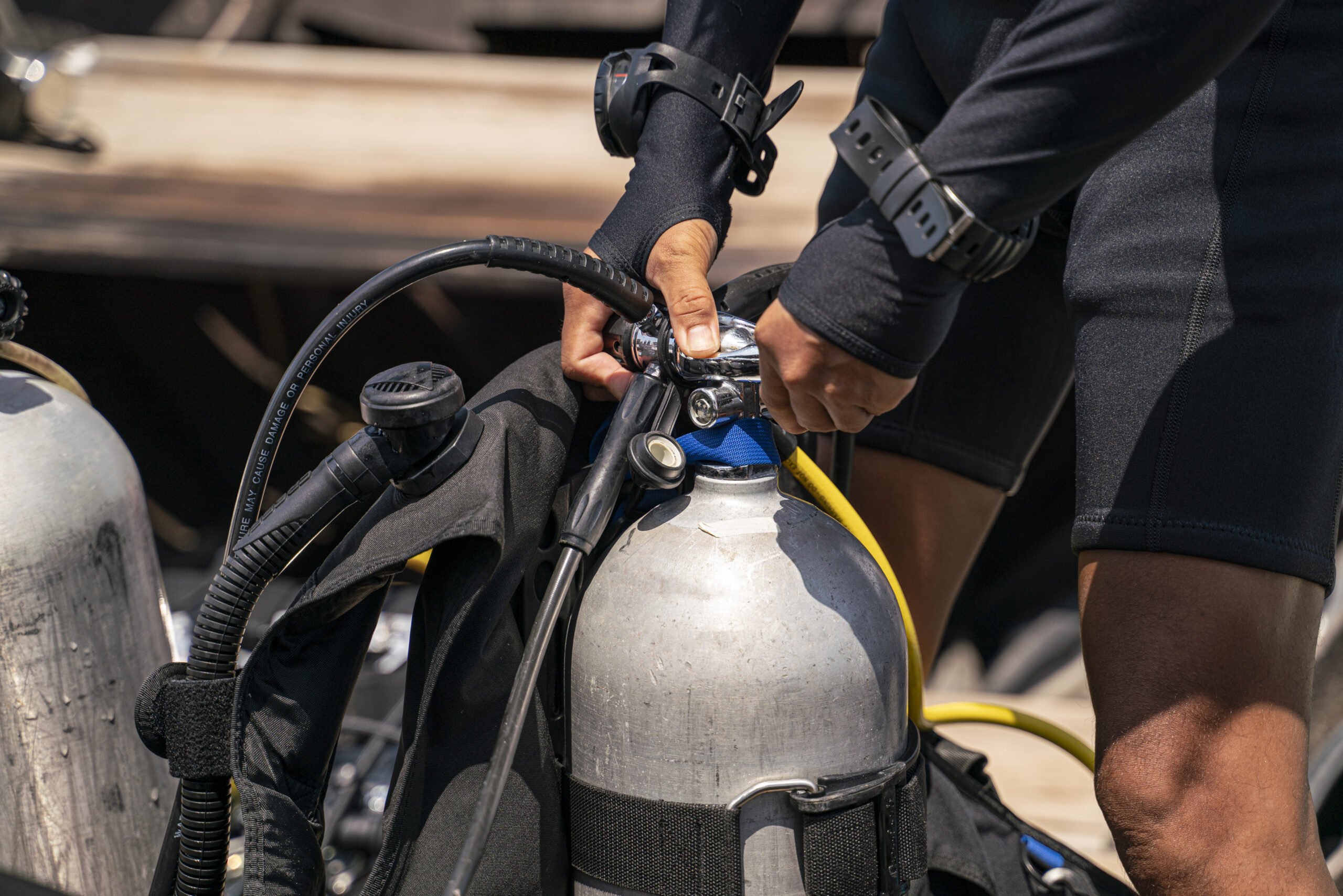
Let’s face it, scuba diving is a very gear intensive sport. The world it allows us to explore is amazing, but we are only able to venture there when our gear is operating properly. Your BCD, regulators, tanks, dive computers and various other equipment all needs proper care & maintenance to ensure its proper operation as well as prevent any accidents or malfunctions during use.
Below, we have our basic care recommendations to help keep your equipment operating properly between service intervals. When it is time for your equipment to be serviced, we have a fully functional service department using certified technicians to ensure your gear operates properly and safely.
Taking a few minutes after every dive (or dive weekend) to clean your gear properly will help ensure it’s ready to go for your next dive and can save you on unneeded repairs.
After use (whether in salt water or fresh water), you should thoroughly rinse all of your gear using fresh, clean water. This will remove any salt & mineral deposits as well as any sediment that may have gotten trapped in your equipment after you dive. When that is complete, dry your gear in a shaded area out of direct sunlight, preferably hanging it to let it drip dry. After it’s dry, return it back to its storage area. You should avoid stowing wet gear as it promotes mold & mildew growth.
Every time you clean your gear, it’s a great opportunity to inspect it for damage, wear & tear, rips, tears, or just a reminder to put that double ender back on your BCD. Your mask & fin straps, regulator mouthpieces, and octo holders are area we generally see the most wear.
Your virtual local Raleigh dive shop serving the Cary, Apex, Durham, Chapel Hill, Garner, Clayton & surrounding areas.
1041 Investment Blvd | Suite 151
Apex, NC 27502